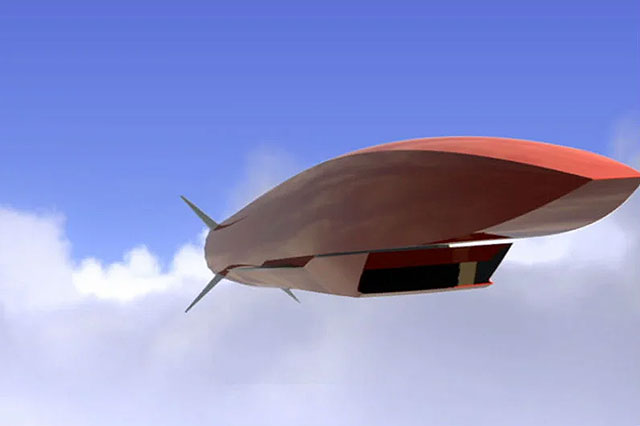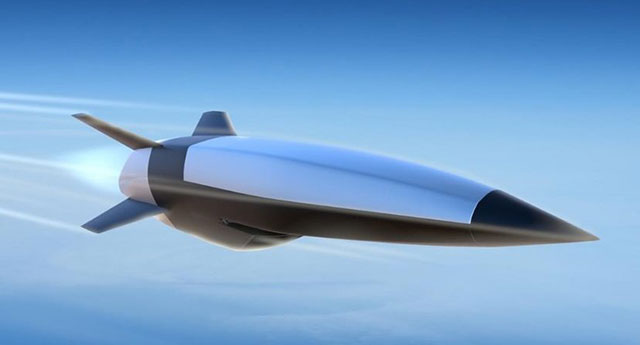AEROSPACE TECHNOLOGY
Hypersonic Systems:
from entertainment to weapons
Hypersonic Sound Systems, or HSS, is a technology that utilizes sound waves to travel large distances at extreme speeds.
This technology was mainly developed to replace traditional loudspeakers and microphones with a device that could precisely broadcast sound waves over long distances without distortion.
The sound from an HSS only moves in one direction, allowing for precise broadcasts without audio bleeding. It does not spread or otherwise "lose" its signal, as sound waves often do when emitted from traditional speakers and microphones. This makes HSS incredibly useful for broadcasting audio or other signals to specific locations without additional hardware or wiring.
Today, hypersonic technology takes on a new purpose: it is no longer just an audio-transmission system but has become a powerful weapon in the military arsenal. In this article we will discuss the progress made with hypersonic weapons systems and where we stand in terms of their potential use.

What does the future of hypersonic weapons look like, and what defensive measures can we take against them? ©MBDA Systems
What Are Hypersonic Systems?
In a military setting, hypersonic systems are defined as any form of propulsion system that can reach speeds of Mach 5 or higher (3,800 mph). This can include air and space-based craft, such as missiles, satellites, and aircraft. These systems are designed to travel faster and further than ever before and could potentially be used to deliver payloads and information in a fraction of the time.
To put that into perspective, the Blackbird could fly at Mach 3.2 and is still considered the world's fastest manned plane. In the case of unmanned weapons, Mach 5 is only the baseline, with projections estimating that missiles could potentially reach speeds of Mach 20 (15,000mph).

A contractor-derived artist's rendering of the Hypersonic Attack Cruise Missile. ©Raytheon Missiles & Defense illustration
Hypersonic Cruise Missiles (HCM)
Hypersonic Cruise Missiles are missiles boosted by a rocket to reach hypersonic speeds. Once in flight, they use scramjets, or air-breathing engines, to sustain their speed and range. These missiles are capable of zigzagging and making drastic changes in course mid-flight.
Hypersonic Glide Vehicles (HGV)
As the name suggests, Hypersonic Glide Vehicles are like locomotives that ride the wind. These missiles are launched atop a rocket and then glide along the edge of Earth's atmosphere, flipping and changing direction as needed.
Hypersonic missiles can change direction and speed on a whim. This maneuverability makes them virtually impossible to track and defend against.
What it means for modern warfare
Due to their extreme speed and maneuverability, hypersonic systems could potentially disrupt the way we wage war in the future. With the ability to travel further and faster than ever, they can deliver weapons across vast distances in a matter of minutes. As for Hypersonic Sound Systems, they could be used to broadcast messages and other information quickly and precisely, reducing the risk of communications delays, interceptions, and miscommunications.
In addition, current defense systems, such as anti-aircraft missiles and interceptors, would be rendered virtually useless against hypersonic threats. For instance, the inter-ballistic missile defense systems used by the U.S. could not keep up with hypersonic missiles. Although the ICBMs are much faster than current hypersonic systems, inter-ballistic defense works on the premise that we can predict the target's trajectory and launch an interceptor in time. Hypersonic missiles can change direction and speed on a whim. This maneuverability makes them virtually impossible to track and defend against.
As such, the development of hypersonic systems has created an arms race between leading nations.
Use in Ukraine
The Russia-Ukraine conflict has been cited as the first example of hypersonic weapons in action. In this case, the Russians have deployed a series of hypersonic missiles called "Kinzhal," or "dagger" in Russian, deployed from MiG fighter jets.
U.S. President Joe Biden has confirmed the use and deployment of the Kinzhal missiles in Ukraine and has promised to continue developing American hypersonic capabilities in response. His Secretary of Defence, Lloyd Austin, did not seem overly worried by the news, stating that these missiles would "not be a game-changer."
In the UK, the Hypersonic Air Vehicle Experimental (HVX) Programme led by a partnership between Reaction Engines, Rolls-Royce, and the Royal Air Force’s Rapid Capabilities Office (RCO) is focusing on rapidly maturing the technologies needed to deliver a step-change reduction in the cost of developing a reusable high-Mach/hypersonic air vehicle. Reaction Engines’ novel precooler and SABRE combined-cycle engine technologies are key foundations for the Programme. In combination with Rolls-Royce’s world-beating gas turbine technology, this brings a formidable capability to take on the challenging problems inherent with hypersonic flight.
That's because missiles reaching Mach 5 aren't a huge surprise. Launched from miles away, most missiles would eventually reach such speeds. More significant is the development of Hypersonic Glide Vehicles (HGV), which could fly and maneuver in the atmosphere at hypersonic speeds.
Russia is also believed to have achieved such a feat with the “Avangard” but has yet to deploy it. However, the significance of the MiG-31-launched Kinzhal cannot be downplayed since it can be used in a first-strike situation.
The race with China
Another country at the forefront of hypersonic research is China. China is currently the leader when it comes to hypersonic glide vehicles, which has some Western experts worried. These HGVs have been developed for both military and commercial use. Since HGVs are essentially spacecraft, they can be used for various applications, including communication, surveillance, and weapons.
With the successful launch of its hypersonic weapons, China has solidified its place as a superpower and major player in the global arms race.
In August 2021, China shocked officials when it successfully test-launched a nuclear-capable hypersonic missile that circled the globe. The missile took off and deployed an HGV that glided back to China. Although it missed its target, the test was deemed successful and marked a significant step forward in the development of HGVs.
The news comes as concerns over China's military capabilities continue to grow. Previous estimates about the country's nuclear capabilities are now proving to be outdated. With the successful launch of its hypersonic weapons, China has solidified its place as a superpower and major player in the global arms race.
©LIFT, Department of Defense
Why the West is behind
The answer is two-fold. The first is purely physical. Hypersonic missiles come with a host of challenges that need solving. For one, hypersonic speeds create incredible amounts of friction and heat that the missile and its components must withstand. Furthermore, hypersonic missiles need extremely precise guidance systems and advanced flight controls. Otherwise, accuracy and reliability can be compromised.
The other challenge is a lack of testing. These missiles use hypersonic wind tunnels, which are not widely available. A hypersonic wind tunnel is essentially a large tube that can recreate the hypersonic flow conditions. Researchers can then study and test the behavior of the missile and HGV in these extreme conditions.
Due to their costly nature and the amount of time they take to build, miniature versions of these wind tunnels were thought to be the only possible option for research. Researchers print 3D models of aircraft and missiles and test these in a smaller wind tunnel instead.
In the US, Medium-sized wind tunnels take researchers 5-10 years to build, while Chinese researchers can build them in a matter of six months. Furthermore, China now announced that they had created the world's first full-sized wind tunnel, capable of testing a full-scale hypersonic missile.
In Europe, the European Commission approved the plans to invest nearly €100 million for the development of the concept phase of the European Hypersonic Defence Interceptor Programme.
India is also a leading nation in hypersonic operational capabilities with its Hypersonic Technology Demonstrator Vehicle (HSTDV) is being developed as a carrier vehicle for hypersonic and long-range cruise missiles. It could even launch of small satellites at low cost.
In Europe, the European Commission approved the plans to invest nearly €100 million for the development of the concept phase of the European Hypersonic Defence Interceptor Programme, also known as the EU HYDEF as part of wider the TWISTER (Timely Warning and Interception with Space-based TheatER surveillance) capability project for implementation within the Permanent Structured Cooperation (PESCO) framework.